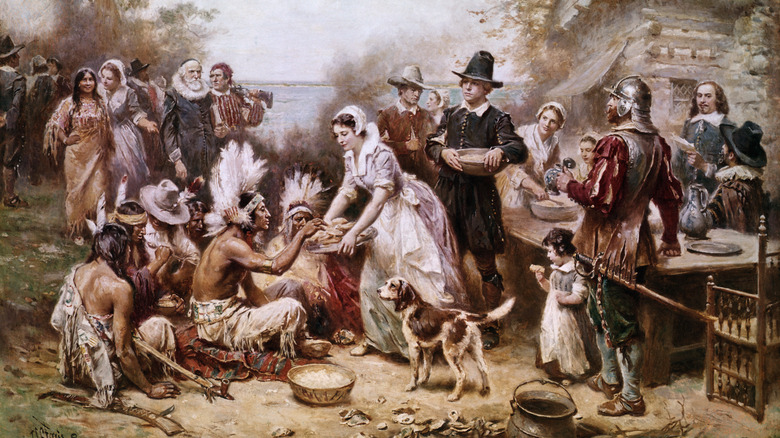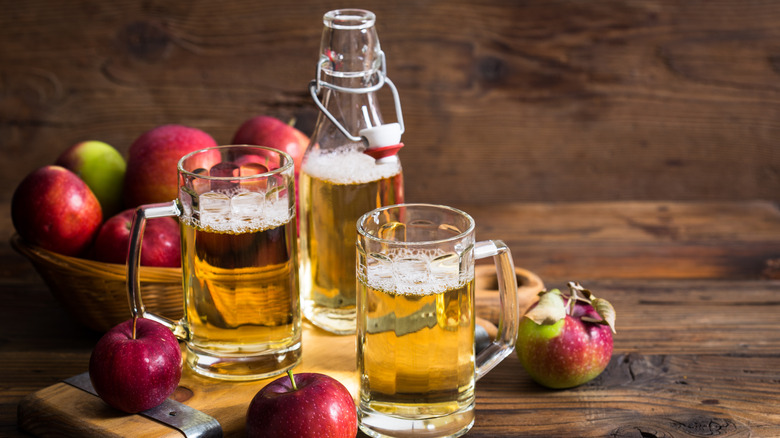Here's What The Pilgrims Likely Had To Drink At The First Thanksgiving
The first Thanksgiving was celebrated by the English Pilgrims and the Wampanoag tribe sometime between late September and early November 1621. A letter written by Pilgrim Edward Winslow provides the only record of what food was served at the feast. According to Winslow, the Pilgrim men provided freshly killed wild fowl, and the Wampanoag contributed five deer, so we know that game meats were on the table. There may have also been shellfish and indigenous fruits, nuts, and newly grown vegetables, but that's conjecture. Winslow's details are scant, and he did not reveal what the Pilgrims' beverage of choice was, although fresh water and hard cider are two distinct possibilities.
In the Elizabethan era, the Thames River was dangerously polluted, and with no filtration system, drinking water was perilous to one's physical well-being. Because of this, doctors prescribed beer and ale as the healthier options. Little had changed by 1620, when the Pilgrims were setting sail on the Mayflower. The ship was loaded with casks of beer, wine, and aqua-vitae, which was likely harder stuff, but the specifics aren't known for certain.
By the time the Mayflower docked in Plymouth harbor, so much beer had been consumed that the ship's captain forced the Pilgrims ashore so the remaining beer could be saved for the crew. The Pilgrims had to make due with the abundant fresh water flowing in streams and creeks. Surprised by its delicious taste, they drank it with abandon as they had once done with beer and wine.
The Pilgrims were hardly teetotalers
The Pilgrims often get confused with the Puritans, and although both religious sects were rebelling against the Church of England, the Pilgrims left the church altogether, while the Puritans tried to reform it. As separatists, the Pilgrims were more free-flowing and, accounting for how many children the colonists conceived, they were certainly not prudes. When it came to drink, they disapproved of drinking to excess but thoroughly enjoyed an alcoholic tipple or two. The Pilgrims' first winter was extremely challenging, with half of the their number dying. Under the guidance of the Wampanoag, they grew their first crops, but since these were for sustenance, hops — the essential flavoring for beer — was not yet cultivated.
Different types of apples, however, were plentiful in Plymouth, and since hard cider was a popular substitute for water in England, the Pilgrims may have brewed their own. The Wampanoag were not known to have drunk alcohol, so the cider the Pilgrim's brought to the feast — possibly three to five gallons — may have been their first taste. But at the time, hard cider was a less alcoholic drink, having purportedly only 2-4% alcohol per volume, compared to the 4.5-7% ABV of today's hard ciders, so it was a pretty weak quaff. The point, of course, of that first Thanksgiving was not to get drunk but to celebrate the harvest and companionship of new friends and family, just as we do today.

